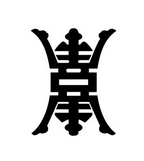Why Use Stick and Ruler
The Use of the Taiji Stick and Ruler in Qigong Practice
The Taiji Stick and Ruler Neigong is a rarely seen comprehensive system of internal cultivation that has both an interesting history and practice method. The system is said to have originated with the sage Chen Tuan (Chen Xiyi), a reclusive Daoist associated with Mount Hua in western China. Chen Tuan was a personal friend of Zhao Kuangyin, the founding emperor of the Song Dynasty (960-1279). Chen taught Zhao the method of Taiji Stick and Ruler Neigong, and it was subsequently passed down as a secret method of health preservation in the imperial household. The system was spread from Daoist to Daoist over almost 6 centuries before it was taught to the outside world again.
In the early 19th century Taiji Stick and Ruler was transmitted to a wandering Daoist hermit by the name of Huo Chengguang. In 1820 when traveling and teaching in Shanxi Province, Huo met a young man by the name of Peng Tingjun. Peng had already practiced martial arts for several years, but when he learned of Huo he decided to seek instruction from him. Over several years of ongoing teaching Huo took Peng as a formal lineage disciple and transmitted the methods of Taiji Stick and Ruler. In the 20th century the Qigong giant Hu Yaozhen (one of the people responsible for popularizing the word ‘Qigong’) taught his disciple Feng Zhiqiang. Feng was perhaps one of China’s greatest Chen style Taiji masters of the century, and also a master of Qigong. Feng taught his disciple and son-in-law Wang Fengming, and I am Wang’s disciple. All of us in the lineage learned in the traditional master-disciple relationship, where teaching is done one-on-one over years of time.
One of the characteristics of the system is that it uses two implements, the Stick (太極棒) and the Ruler (太極尺), in practicing the exercises. To a large extent, all of Qigong is merely the physical expression of fundamental laws of the universe, namely Yin and Yang (陰陽), or the Five Phases (五行) as extensions of Yin and Yang. The Stick and Ruler are no different. The Stick is straighter and represents Yang, while the Ruler is more rounded with softer curves and represents Yin. Accordingly, the Stick is used more frequently for exercises that move and circulate Qi (which is Yang), while the Ruler is used more for exercises that absorb and consolidate the Qi (which is Yin). Both the Stick and Ruler have a central feature, a ring on the Stick and a small sphere on the Ruler. This represents the Dan Tian (丹田), the energetic center of the body.
Dr. McCann practicing Six Harmonies movement with the Taiji Ruler
But why use the Stick and Ruler in the first place? Almost all Qigong exercises are based on uniting movement, breathing and attention. We are using our own bodies to express the balance and harmony inherent in the natural world, and in doing so we place ourselves in resonance with nature for the purposes of developing health and treating disease (which is a type of imbalance). Using a hand held implement such as the Stick and Ruler helps focus the mind more effectively than doing the physical movement alone. This is similar to in Buddhist practice using a mala, or rosary, while saying mantra. Physically touching something focuses the mind more effectively on the body. The Stick and Ruler focus the mind more effectively on the body, thereby uniting physical movement and attention better than Qigong exercises that don’t use them.
Another benefit is that holding and manipulating the Stick and Ruler presses and massages acupuncture points and channels. This further accentuates their ability to balance the body. For more experienced practitioners the choice of wood makes a difference as well. Ideally the wood should be very strong yet porous, coming from fast growing hardwood trees. This lets the Stick and Ruler better circulate the practitioner’s Qi. For my own personal practice I use a set made of black walnut wood. According to Chinese medicine walnut is as an herb that strengthens the Kidneys. The color of the wood is dark, also meaning it has an association with Kidneys through Five Phase theory. Thus, the black walnut Stick and Ruler help with exercises of condensing Qi into the Kidneys and circulating the core Yang Qi (rooted in Kidney) through the body’s channels and vessels.
Over the last several years the Taiji Stick and Ruler have become my primary personal practice. I’m constantly amazed at the brilliant construction of the system and how these two simple pieces of wood just make it all work more efficiently.

